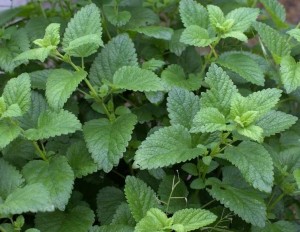
Tried & True Lemon Balm
Melissa officinalis.
Lemon Balm is an easy-to-grow herb with citrus lemon fragrance and a distinctive lemon minty flavour. The oval, toothed leaves look similar to mint and may be mistaken for it at first glance. Lemon Balm is easy to grow and spreads vigorously so some may want to grow the herb in containers. Use freshly chopped leaves for dips, sauces, salad dressing, vegetable dishes, poultry and fish dishes, and desserts. Fresh or dry leaves can be added to make cool, refreshing lemonade or a mild, citrus-tasting tea.
Lemon Balm can be grown with cole crops such as broccoli, cabbage, and cauliflower. The fragrance may aid in deterring insects that attack these crops. Lemon balm is pollinator-friendly and attracts honeybees so plant it close to crops or fruit trees to help with pollination. Deer resistant.
Lemon balm grows best in cool weather. If winter temperatures fall below 0°F or -18°C it is best to mulch as the plant will die back and then regrow from the roots in spring.
| Harvesting | Snip leaves and sprigs for use as needed during the spring - late fall growing season. The leaves bruise quite easily so handle with care. The lower, older leaves will have the most robust aroma. It is best to harvest leaves for drying before the plant flowers. The plant can be cut back midseason as it will regrow new leaves in approximately 3 to 4 weeks. |
|---|---|
| Maturity | 70 to 95 days |
| Height | 18 - 24 inches (46 - 61 cm) |
| Spacing | 18 - 24 inches (46 - 61 cm) |
| Light | Sun to part-shade |
| Soil | Rich, fertile, and well-draining. |
| pH Range | 6.0 - 7.5 |
| Watering | Keep soil evenly moist. |
| Fertilizing | Balanced at time of planting. |
| Nutrients Required | Nitrogen = low, Phosphorus = low, Potassium = low |
Back to HERBS
